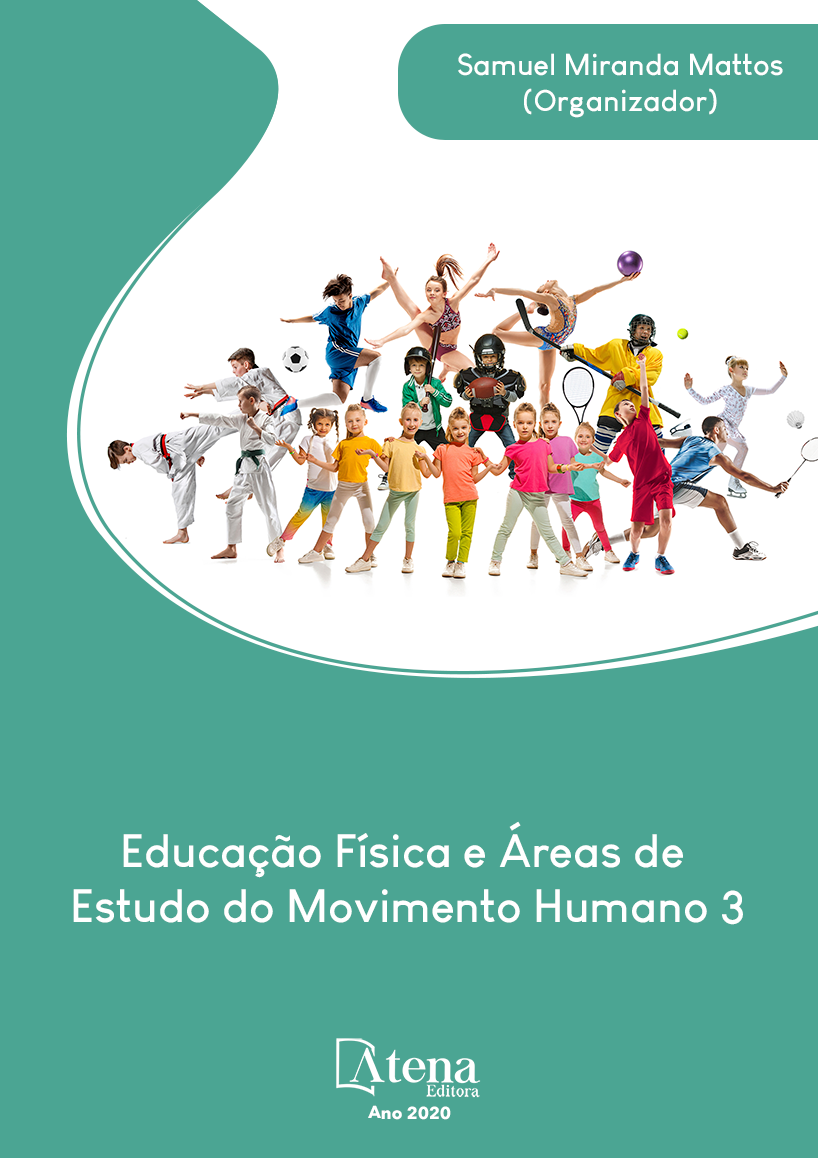
ESTÂMINA: O AUTO-CONTROLE E SEU POTENCIAL PARA UM MAIOR ENVOLVIMENTO DE CRIANÇAS EM ATIVIDADES AERÓBIAS CONTÍNUAS
Dentre as estratégias apontadas na literatura acadêmica para aumentar o nível de atividade física das crianças, está o controle de esforço. Atualmente, existem indícios que o ensino deste tipo de habilidade pode favorecer na criança um maior envolvimento em atividades prolongadas. Os objetivos foram: elaborar um programa de controle de esforço em crianças de diferentes anos escolares; propor um torneio como modelo de avaliação deste desempenho; investigar o possível efeito do ensino da estâmina no envolvimento de atividades contínua. Foram convidados escolares de 2 a 8 anos para participar do experimento que consistiu em corridas durante as aulas de Educação Física (EF) e o desafio final composto por 5 baterias de 15’cada, para correr as seguintes distâncias: 2 a 4 anos (8) 200 metros e 5 a 8 anos (10) 300 metros. A meta principal foi à manutenção do ritmo ao longo das séries, e como medida, utilizou-se a magnitude das diferenças entre os tempos absolutos. Para análise dos dados utilizou-se o teste de medidas repetidas com post hoc de Bonferroni para verificar se houve diferença de desempenho entre as tentativas. O tempo total médio dos alunos de 2 a 4 anos foi de 2’13’’ (33) e não se detectou diferença significativa, entre as tentativas. O tempo total médio dos alunos de 5 a 8 anos foi de 1’41” (11), de acordo com os resultados estatísticos não houve diferença estatística entre quase todas as tentativas, apenas entre os desempenhos da terceira bateria 01:47 (13) para a quinta bateria 1’35” (10) com o p≤0,02. Como conclusão a elaboração do programa parece ter sido efetiva, haja vista, o envolvimento das crianças no evento final. O torneio realizado permitiu o controle da variável investigada de forma eficiente e os resultados indicaram que as crianças foram habilidosas para controlar o esforço ao longo do evento.
ESTÂMINA: O AUTO-CONTROLE E SEU POTENCIAL PARA UM MAIOR ENVOLVIMENTO DE CRIANÇAS EM ATIVIDADES AERÓBIAS CONTÍNUAS
-
DOI: 10.22533/at.ed.1072015068
-
Palavras-chave: Estamina, criança, corrida, controle de ritmo
-
Keywords: Estamina, Child, Running, pace control
-
Abstract:
Among the strategies pointed out in the academic literature to increase the level of children's physical activity, there is effort control. Currently, there are indications that the teaching of this type of skill may favor a greater involvement in children in prolonged activities. The objectives were: to develop an effort control program for children of different school years; propose a tournament as a model for evaluating this performance; investigate the possible effect of teaching the blade on the involvement of continuous activities. Schoolchildren aged 2 to 8 years were invited to participate in the experiment that consisted of races during Physical Education (EF) classes and the final challenge consisting of 5 batteries of 15 'each, to run the following distances: 2 to 4 years (8 ) 200 meters and 5 to 8 years (10) 300 meters. The main goal was to maintain the pace throughout the series, and as a measure, the magnitude of the differences between absolute times was used. For data analysis, the Bonferroni post hoc repeated measures test was used to verify whether there was a difference in performance between the attempts. The average total time for students aged 2 to 4 years was 2'13 ’’ (33) and no significant difference was detected between the attempts. The average total time of students aged 5 to 8 years was 1'41 ”(11), according to the statistical results there was no statistical difference between almost all attempts, only between the performances of the third battery 01:47 (13) for the fifth battery 1'35 ”(10) with op≤0.02. As a conclusion, the elaboration of the program seems to have been effective, considering the children's involvement in the final event. The tournament carried out allowed the control of the investigated variable efficiently and the results indicated that the children were able to control the effort throughout the event.
-
Número de páginas: 9
- Mônica Morcélli
- Camila de Freitas Duarte
- Edson Torres
- Karen Krasucki
- Erick Jeronimo Ferreira
- Carlos Henrique Nascimento da Silva
- Roberto Carlos Lopes
- Fabrício Madureira Barbosa
- Aurea dos Santos Mineiro


